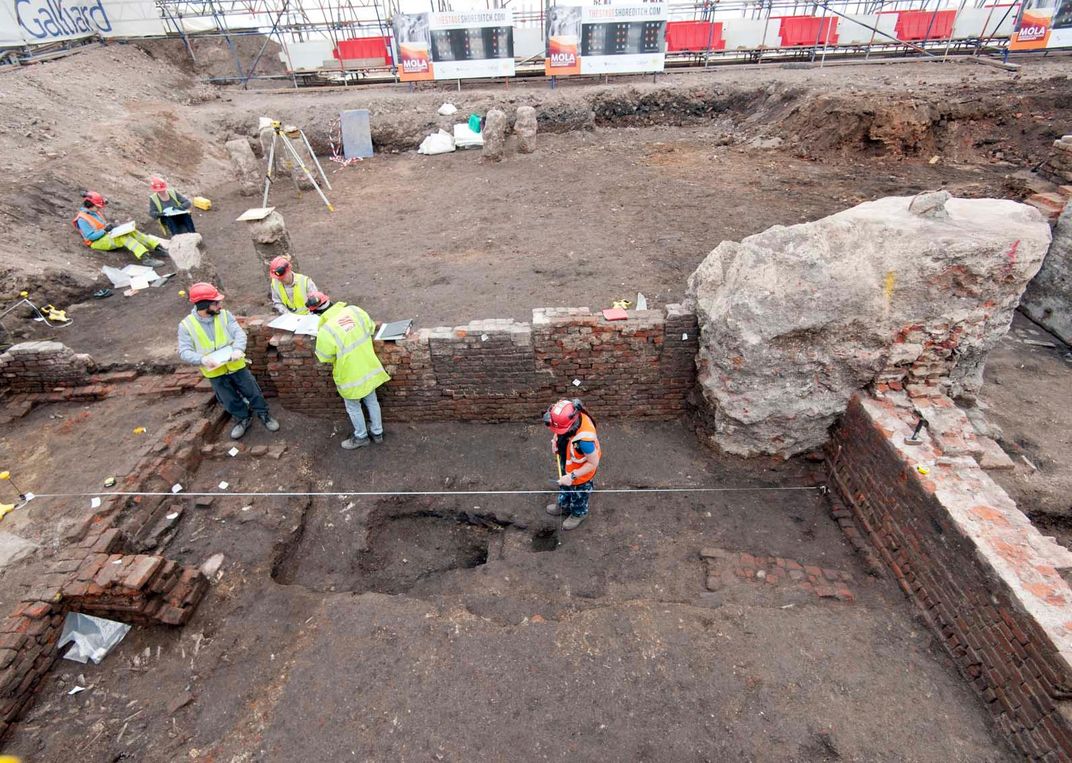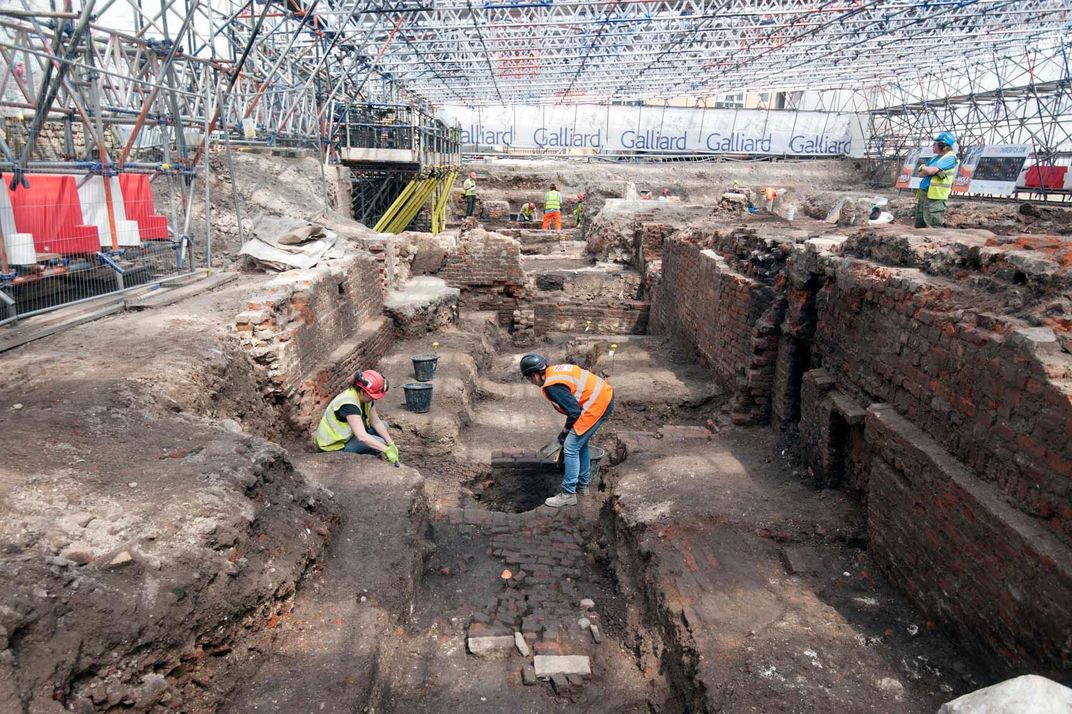Shakespeare May Have Tailored “Henry V” for a Specific Theater
Archaeological digs at the Curtain theater suggest it looked very different from the Bard’s usual venues
/https://tf-cmsv2-smithsonianmag-media.s3.amazonaws.com/filer/a3/37/a337e77c-68a9-4a3a-8768-11c284dbdaae/archaeologist_records_the_remains_at_the_curtain_theatre_c_mola.jpg)
The Globe theater in London may be the venue most famously associated with William Shakespeare, but it wasn’t the only theater to put on his plays during his lifetime. The Curtain theater in London’s Shoreditch neighborhood was also a popular place for plays, but as recent archaeological findings at the long-buried site have shown, it had a very different shape from many of its contemporaries. Now, some experts say it may have actually influenced how Shakespeare staged several of his most famous plays, including the seminal "Henry V."
The Curtain was one of London’s earliest theaters built specifically for plays and performances. Built in 1577, the Curtain was one of the venues where Shakespeare acted and was later home to his company, the Lord Chamberlain’s Men, for several years before the Globe was constructed, Rossella Lorenzi reports for Seeker. But while the Globe has survived into the modern day, all that remains of the Curtain are foundations that were only rediscovered back in 2011.
"This was not a re-purposed space with a stage, it was a place where people came to be immersed in entertainment," the Museum of London Archaeology (MOLA) says in a statement, Lorenzi reports.
Since the Curtain’s remains were discovered behind a Shoreditch pub, archaeologists have been hard at work exhuming its foundations and learning whatever they can about the influential theater. However, the more they learn about the Curtain, the more it appears to have looked very different than historians once imagined, The Evening Standard reports.

Shakespeare scholars have long known that the Curtain was important to the Bard’s work, and that it was even the first venue where the historical play "Henry V" was first performed. However, for years many assumed that it was a round theater like the Globe, thanks to a line in the play calling the performance site “this wooden O." But as archaeologists have uncovered more of its foundations, it appears to have been intentionally built as a long rectangular stage, including hidden passageways to help actors travel from one side to the other unseen, Maev Kennedy reports for The Guardian.
“The question now is whether Shakespeare and other playwrights were writing plays specifically for this kind of stage—which would have required a completely different style of interaction compared to a thrust stage with the audience on three sides,” MOLA senior archaeologist Heather Knight tells Kennedy. “Did it mean that it needed a different style of acting, for instance, or that you could get more people on the stage, and so you could put in many more characters?”
Judging by the evidence, it appears that the “wooden O” reference in the prologue to "Henry V" may have been added to the play for later performances, after Shakespeare moved his company across the river to the Globe, Kennedy reports. While many details around the Bard’s life and work may remain shrouded in mystery, these new clues provide a curious new context for how he originally staged his plays.
